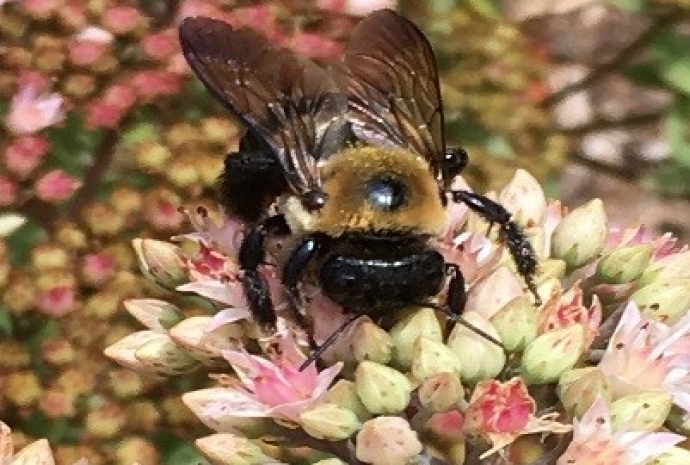
Creating a Biodiverse Pollinator Garden
11/03/20
We are fortunate to live in an area where growing Pollinator Gardens is simple, easy and effective. There are numerous varieties of plants that attract butterflies, hummingbirds and bees. A garden in our area of the country can attract these pollinators for approximately 9 months out of the year, given favorable weather conditions. They need a fertile and organic soil and a minimum of 6-7 hours of sunlight for them to reach their full blooming potential. If planting correctly, there should be blooms from late March to November. The following is a list of several plants with which to start: Bee Balm, Echinacea, Butterfly Weed, Native Grasses, Liatris, Cardinal Flower, Giant Hyssop and Joe Pye Weed. The Bee Balm and Echinacea attract butterflies, Butterfly weed and Native Grasses attract butterfly larvae, Liatris and Cardinal Flower take care of the Hummingbirds and Giant Hyssop and Joe Pye Weed round out the bees. These are just to name a few. One of the most important things to keep in mind is that bees, Hummingbirds and butterflies all have an extremely sensitive Immune System, therefore, what they eat needs to be as organic and pure as possible.
For the past 10 years the Honeybee population has been on the decline in most parts of the world. Colony Collapse has become a major talking point in the environmental arenas because the significance of bee pollination is profound in our food chain. There are many theories about why this event is happening but the primary reason that has been agreed upon by most scientists is improper chemical usage for the plants themselves. Glyphosate to be specific, which is found in Roundup, a commonly used weed killer, appears to be the main culprit. This information is not meant to alarm, but to create awareness about how the human population can offer assistance to nature for a change.
Another great way to attract pollinators is with herbs. Mint, Catmint, Marjoram, Thyme, Chives and Parsley can serve as food for the pollinators and for us. Mint and Parsley appear to be extraordinarily beneficial to the process. If you do not have land to plant a garden, then pots can be used just as easily. The same sun application and soil rules apply as discussed above, however, there may need to be additional watering in a drought year.
There is a project underway through the National Wildlife Alliance to create another super highway for Monarchs that would route them up the East Coast to the North. Currently the only Monarch Highway runs from Texas to Minnesota so with enough planning and people planting Pollinator Gardens, we can help nature provide for these beautiful creatures. If you are interested, you can become a Certified Wildlife Habitat at your home.
There are numerous organizations committed to biodiversity in North Carolina and we have North Carolina State University in Raleigh, which is nationally known for its work with plants and animals.
In order for our plant and animal food sources to remain strong and healthy we must become or continue to be in partnership with nature. Becoming a wildlife habitat steward is an easy, cost-effective way for us to be assured that we as humans can take a que from Hamlet “to be or not to be”. We definitely need to BEE in order to survive.

